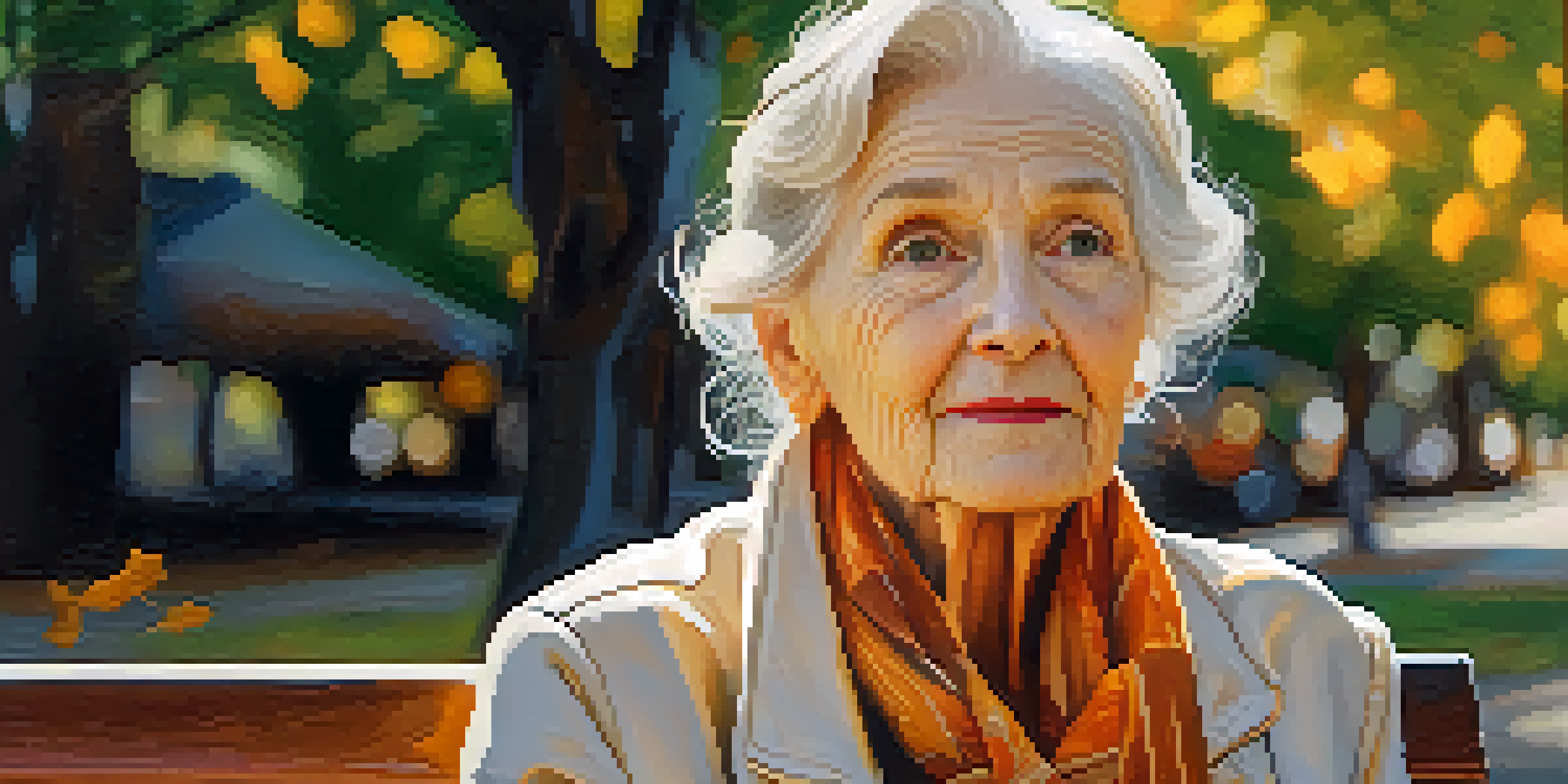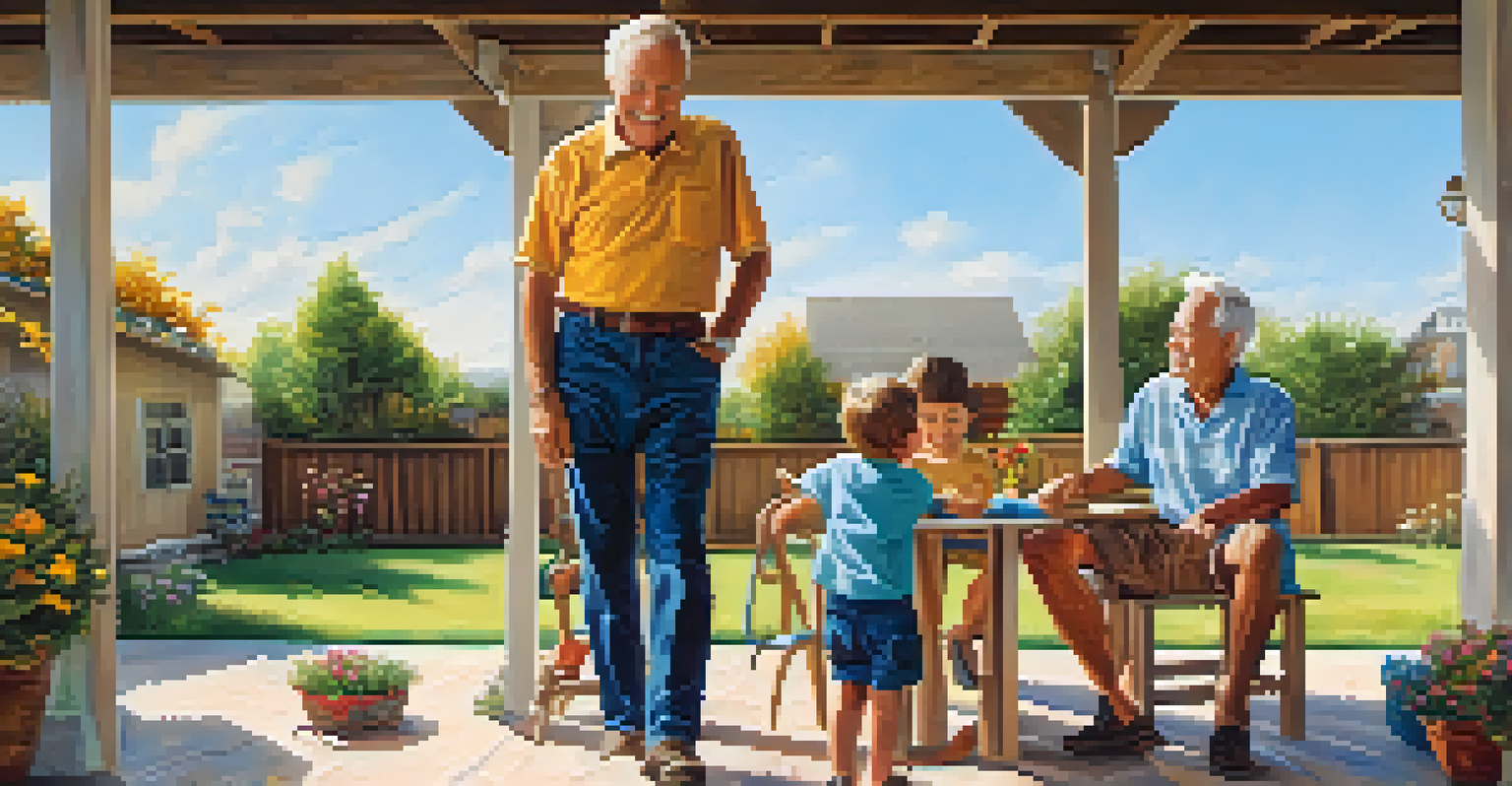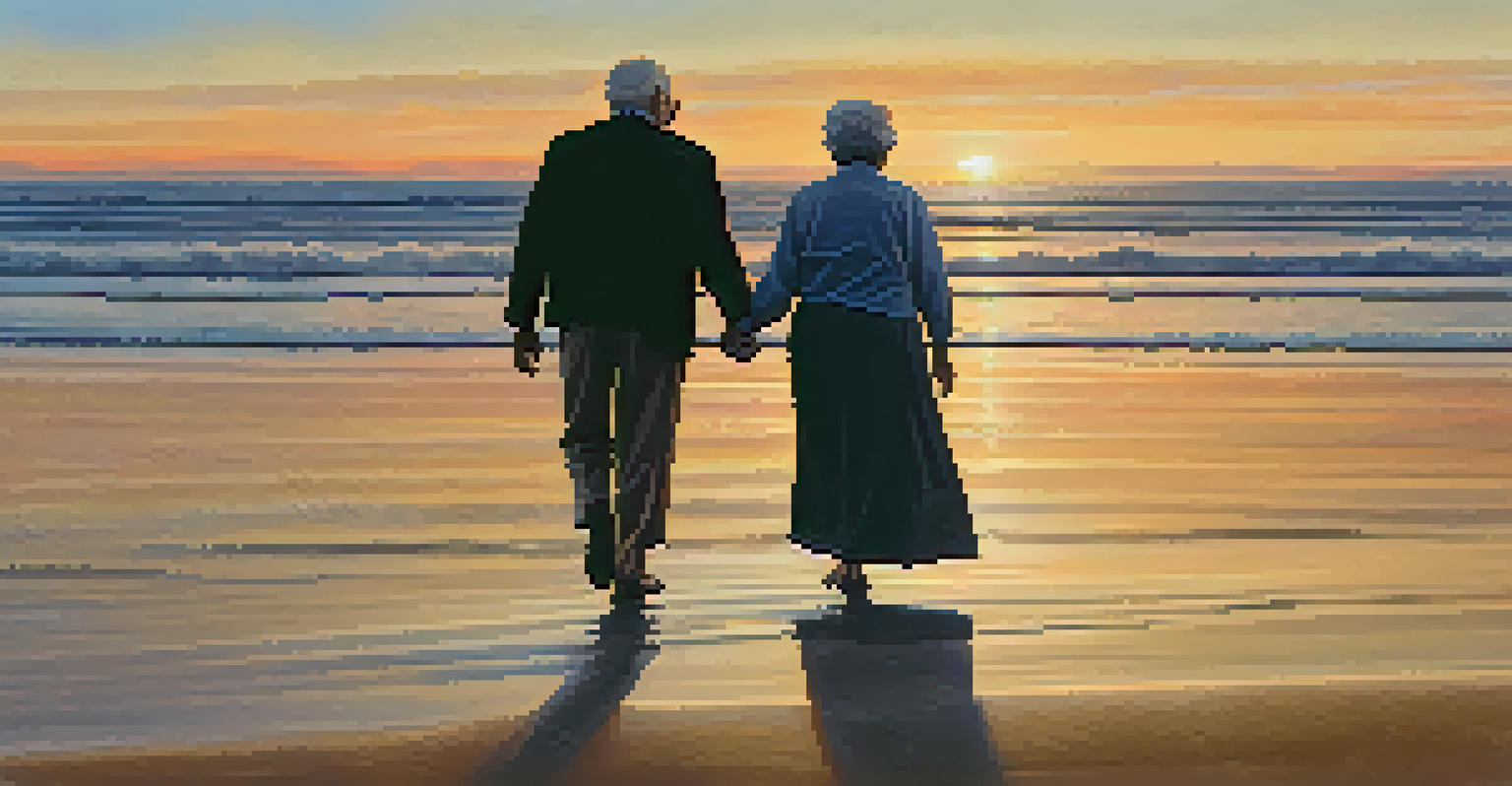The Role of Photography in Capturing Aging Experiences

The Emotional Connection: Photography and Aging
Photography has a unique ability to evoke emotions, particularly when it comes to aging. Each photograph tells a story, capturing the essence of a person's experience over the years. As we age, our faces and bodies change, but so do our memories and emotions, which photography can beautifully encapsulate.
Photography is the story I fail to put into words.
For many, looking back at old photographs can spark nostalgia, reminding them of significant life moments. This emotional connection helps to foster a deeper understanding of the aging process, allowing both the subjects and viewers to reflect on the passage of time. Through the lens, we can appreciate the wisdom and resilience that often accompany aging.
In this way, photography serves as a bridge between generations, preserving memories that can be shared and cherished. It allows younger generations to connect with their elders' experiences, creating a sense of continuity and understanding that transcends time.
The Artistic Perspective: Celebrating Aging Beauty
Photography is not just about capturing moments; it can also celebrate the beauty of aging. Many photographers choose to focus on older subjects, showcasing their grace, strength, and individuality. This artistic perspective challenges societal norms that often equate youth with beauty, highlighting the unique allure found in every wrinkle and gray hair.

By portraying aging in a positive light, photographers can help shift perceptions and encourage society to embrace the natural aging process. For instance, portraits of elderly individuals engaged in activities they love can radiate joy and vitality, proving that life continues to be vibrant and fulfilling at any age.
Photography Captures Aging Stories
Photography serves as a powerful medium to evoke emotions and reflect on the experiences of aging individuals.
This artistic celebration of aging can empower older adults, enabling them to see themselves through a different lens. It can inspire confidence and pride in their lived experiences, reminding them that they are still valuable contributors to society.
Documenting Change: The Power of Time-lapse Photography
Time-lapse photography offers a dynamic way to document the aging process. By capturing images at regular intervals, this technique vividly showcases how individuals change over time. It's fascinating to see the subtle shifts in appearance and demeanor, providing a powerful visual narrative of life's journey.
The camera is an instrument that teaches people how to see without a camera.
This method not only highlights physical transformations but also reflects emotional growth. For example, a time-lapse series of a grandparent playing with their grandchildren can reveal deepening bonds and evolving family relationships. It encapsulates the essence of time spent together, emphasizing the importance of connection as we age.
Furthermore, time-lapse photography serves as a reminder of the fleeting nature of life. It encourages viewers to appreciate the present moment and the beauty of their own aging journey, fostering a sense of gratitude for the experiences that shape us.
The Role of Photography in Personal Narratives
Photography plays a crucial role in telling personal narratives, especially as people age. Many individuals use photographs to document their life stories, creating visual biographies that reflect their experiences, challenges, and triumphs. This storytelling aspect can be incredibly therapeutic, allowing for introspection and acceptance.
Sharing these personal narratives through photography can foster connections with others who may have similar experiences. It opens up conversations about aging, health, and the inevitability of change. By sharing their stories, individuals can inspire others to embrace their own journeys with grace and authenticity.
Celebrating the Beauty of Aging
Through artistic representation, photography can challenge societal norms and embrace the unique beauty found in aging.
Moreover, personal narratives captured through photography have the power to educate younger audiences about the realities of aging. They can dispel myths and stereotypes, encouraging a more nuanced understanding of what it means to grow older.
Cultural Perspectives: Aging Through Different Lenses
Different cultures have unique perspectives on aging, often reflected in their photography. In some societies, elderly individuals are revered for their wisdom and life experience, while in others, youth is celebrated above all. Exploring these cultural differences through photography can enhance our understanding of aging worldwide.
Photographers who document aging across cultures provide valuable insights into how societal values shape the experiences of older adults. For instance, in cultures that prioritize community, images may depict elders in group settings, engaging in traditions that celebrate their roles as storytellers and mentors.
By appreciating the diversity of aging experiences globally, we can foster empathy and challenge our preconceived notions. Photography becomes a tool for cultural exchange, highlighting both the universal and unique aspects of aging.
The Therapeutic Benefits of Photography for Seniors
Engaging with photography can have therapeutic benefits for seniors, enhancing their well-being and quality of life. It provides a creative outlet for self-expression, allowing older adults to explore their emotions and share their stories. This engagement can be especially important for those facing isolation or mental health challenges.
Photography workshops tailored for seniors offer opportunities to learn new skills while fostering social connections. These classes can create supportive communities where participants share their work, celebrate each other's achievements, and build friendships that combat loneliness.
Photography Enhances Seniors' Lives
Engaging in photography provides therapeutic benefits for seniors, fostering creativity, social connections, and well-being.
Moreover, the act of photographing can encourage seniors to remain active and engaged with their surroundings. Whether capturing nature, family gatherings, or everyday moments, photography can help them find joy and meaning in their daily lives.
Looking Ahead: The Future of Aging Photography
As technology continues to evolve, so too will the ways we capture and understand aging through photography. With the rise of social media platforms, older adults are increasingly sharing their stories and experiences online, creating a vibrant community that challenges stereotypes associated with aging. This shift democratizes the narrative around aging, allowing diverse voices to be heard.
Innovative techniques, such as virtual reality and augmented reality, may further transform how we experience aging photography. These technologies can immerse viewers in the stories of older individuals, providing a deeper understanding of their lives and experiences. The future holds exciting possibilities for how we can connect with and celebrate aging.

Ultimately, as we move forward, the role of photography in capturing aging experiences will only grow. It will continue to foster connections, challenge perceptions, and celebrate the beauty of life's journey, reminding us all of the value that each stage of life holds.